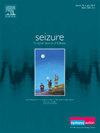Advancing epilepsy diagnosis: A meta-analysis of artificial intelligence approaches for interictal epileptiform discharge detection
IF 2.7
3区 医学
Q2 CLINICAL NEUROLOGY
引用次数: 0
Abstract
Introduction
Interictal epileptiform discharges (IEDs) in electroencephalograms (EEGs) are an important biomarker for epilepsy. Currently, the gold standard for IED detection is the visual analysis performed by experts. However, this process is expert-biased, and time-consuming. Developing fast, accurate, and robust detection methods for IEDs based on EEG may facilitate epilepsy diagnosis. We aim to assess the performance of deep learning (DL) and classic machine learning (ML) algorithms in classifying EEG segments into IED and non-IED categories, as well as distinguishing whether the entire EEG contains IED or not.
Methods
We systematically searched PubMed, Embase, and Web of Science following PRISMA guidelines. We excluded studies that only performed the detection of IEDs instead of binary segment classification. Risk of Bias was evaluated with Quality Assessment of Diagnostic Accuracy Studies (QUADAS-2). Meta-analysis with the overall area under the Summary Receiver Operating Characteristic (SROC), sensitivity, and specificity as effect measures, was performed with R software.
Results
A total of 23 studies, comprising 3,629 patients, were eligible for synthesis. Eighteen models performed discharge-level classification, and 6 whole-EEG classification. For the IED-level classification, 3 models were validated in an external dataset with more than 50 patients and achieved a sensitivity of 84.9 % (95 % CI: 82.3–87.2) and a specificity of 68.7 % (95 % CI: 7.9–98.2). Five studies reported model performance using both internal validation (cross-validation) and external datasets. The meta-analysis revealed higher performance for internal validation, with 90.4 % sensitivity and 99.6 % specificity, compared to external validation, which showed 78.1 % sensitivity and 80.1 % specificity.
Conclusion
Meta-analysis showed higher performance for models validated with resampling methods compared to those using external datasets. Only a minority of models use more robust validation techniques, which often leads to overfitting.
推进癫痫诊断:发作间期癫痫样放电检测人工智能方法的荟萃分析。
简介脑电图(EEG)中的发作间期癫痫样放电(IED)是癫痫的重要生物标志物。目前,IED 检测的黄金标准是由专家进行视觉分析。然而,这一过程存在专家偏见,而且耗费时间。开发基于脑电图的快速、准确、稳健的 IED 检测方法可能有助于癫痫诊断。我们旨在评估深度学习(DL)和经典机器学习(ML)算法在将脑电图片段分为 IED 和非 IED 类别以及区分整个脑电图是否包含 IED 方面的性能:我们按照 PRISMA 指南系统地检索了 PubMed、Embase 和 Web of Science。我们排除了只进行 IED 检测而非二元节段分类的研究。通过诊断准确性研究质量评估(QUADAS-2)评估了偏倚风险。用 R 软件进行了以受者工作特征汇总(SROC)下的总面积、灵敏度和特异性作为效果测量指标的 Meta 分析:共有 23 项研究(包括 3629 名患者)符合综合分析的条件。18个模型进行了出院级别分类,6个模型进行了整个EEG分类。对于 IED 级别分类,3 个模型在一个包含 50 多名患者的外部数据集中进行了验证,灵敏度达到 84.9%(95% CI:82.3-87.2),特异度达到 68.7%(95% CI:7.9-98.2)。五项研究报告了使用内部验证(交叉验证)和外部数据集的模型性能。荟萃分析显示,内部验证的灵敏度为 90.4%,特异性为 99.6%,而外部验证的灵敏度为 78.1%,特异性为 80.1%:元分析表明,与使用外部数据集的模型相比,使用重采样方法验证的模型性能更高。只有少数模型使用了更稳健的验证技术,这往往会导致过度拟合。
本文章由计算机程序翻译,如有差异,请以英文原文为准。
求助全文
约1分钟内获得全文
求助全文
来源期刊

Seizure-European Journal of Epilepsy
医学-临床神经学
CiteScore
5.60
自引率
6.70%
发文量
231
审稿时长
34 days
期刊介绍:
Seizure - European Journal of Epilepsy is an international journal owned by Epilepsy Action (the largest member led epilepsy organisation in the UK). It provides a forum for papers on all topics related to epilepsy and seizure disorders.
 求助内容:
求助内容: 应助结果提醒方式:
应助结果提醒方式:


